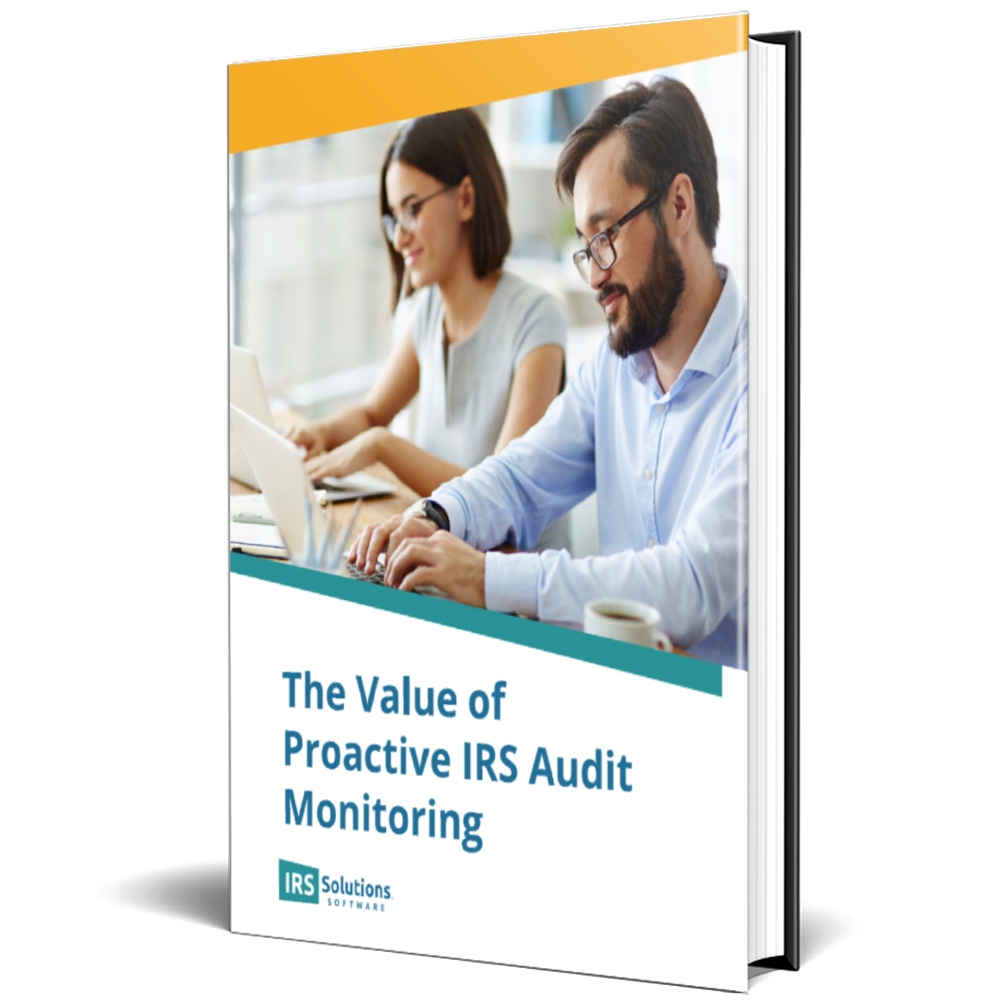The IRS has refined its complex system for tracking taxpayer accounts for more than a century. Today, every action the agency takes is recorded with specific codes on computerized transcripts. These IRS transcript codes provide valuable insights into potential enforcement actions.
It’s crucial for tax professionals to stay informed, but there’s a challenge: manually reviewing IRS transcripts is tedious, and spotting changes in real time is nearly impossible. Most CPAs, EAs, and tax pros don’t realize an issue exists until their client receives a notice in the mail. At this point, the IRS has already started making its moves. Options are limited, and professionals are forced into a reactive, defensive position.
There’s a better way.
By leveraging cutting-edge software that parses IRS transcript codes and flags transcript changes in real time, tax professionals can detect discrepancies before audits or penalties are issued. This proactive approach enables timely corrective actions, such as filing amended returns, submitting supporting documentation, correcting timing issues, or clarifying income classification.
Rather than being forced to react to IRS actions already in motion, tax pros can take control, preventing problems before they occur, protecting their clients from unnecessary stress, and ensuring better outcomes.
IRS Actions are Often Triggered by Discrepancies
Income discrepancy is among the most common causes for a taxpayer audit. The IRS receives income information from multiple sources, including W-2s, 1099s, mortgage interest statements, and brokerage reports. It automatically cross-checks these records against what the taxpayer reports on their return. When it detects a mismatch, the IRS flags the return for review, which can escalate into a full audit. The agency describes this process as follows:
The IRS receives information from third parties, such as employers and financial institutions. Using an automated system, the Automated Underreporter (AUR) function compares the information reported by third parties to the information reported on your return to identify potential discrepancies. When a potential discrepancy is identified, a tax examiner may further review the return, comparing the data reported to the IRS by employers, banks, businesses, and other payers on information returns (Forms W-2, 1098, 1099, etc.) to the income, credits, and deductions you report on your income tax return.
The government reveals its intention via a series of transaction codes (TCs) used to log actions on taxpayer accounts. By analyzing these IRS transcript codes, skilled legal, financial, and tax practitioners can spot early signs that a return is being scrutinized. This information can be used to proactively resolve issues before they escalate, rather than waiting for official IRS notices to arrive.
Key discrepancy-related codes that point to a potential audit or review include:
- TC 420 – Audit Indicator: This code appears when a return is selected for an audit or examination.
- TC 424 – Examination Request: This indicates that the return is under review and may be subject to an audit.
- TC 922 – Review of Earned Income Credit or Wage Verification: This suggests that the IRS is questioning certain credits or reported income, which could lead to an audit.
- TC 976 – Duplicate Return Filed: This code may indicate identity theft or a situation where the IRS is reviewing multiple returns filed under the same taxpayer ID.
Avoid an Audit Before It Starts
IRS Solutions® has recently added a Discrepancy Report to the suite of features available to all members. This new capability automatically compares a filed tax return with the income reported to the IRS by third parties and identifies discrepancies. It enables practitioners to address potential audit triggers before audits or penalties are issued. Available to all members at no additional charge, this exciting innovation supports the proactive filing of amended returns, supplemental documentation, timing issue corrections, and clarification of income classification.
By thoroughly comparing filed tax returns against the income information reported to the IRS by third parties, the Discrepancy Report helps professionals prevent unnecessary IRS scrutiny and provide exceptional service to their clients. Reports highlight critical issues, categorized into three main types:
- Missing Forms: This includes unreported W-2 income, omitted contractor payments on 1099-MISC/NEC forms, absent payment processor income reported via 1099-K, and excluded investment income detailed in 1099-INT/DIV forms.
- Amount Mismatches: Users are alerted to instances such as partially reported income, transportation-related reporting errors, incorrectly combined amounts from multiple W-2s, and misclassified income types.
- Timing Issues: The report may identify situations where income was attributed to the incorrect tax year, amended returns were not filed as needed, or corrections from previous years were overlooked.
The IRS does not immediately issue an audit notice the moment it detects a mismatch. The process typically begins with a CP2000, Notice of Underreported Income, and there is often a window of opportunity to correct errors before enforcement actions start. Swift action, initiated as soon as a discrepancy or potential audit trigger is detected, can prevent the situation from escalating.
The first step is to communicate with clients about potential risks. Many taxpayers are unaware of discrepancies in their filings, particularly when they involve third-party reports. By regularly reviewing IRS transcript changes, tax professionals can inform clients of potential issues and guide them on how to address them before they become major problems.
The second step is to file an amended return (Form 1040-X) as soon as possible. Correcting errors proactively shows good faith and can prevent the IRS from taking further action. An amended return should clearly explain the correction and provide supporting documentation to justify the changes. This will also help your client avoid additional penalties and interest.
The third step is to continue monitoring changes to your IRS transcript. Even after filing an amended return, it’s essential to monitor how the IRS processes the correction. The IRS may take weeks or months to review changes, and additional IRS transcript codes may indicate whether further action is appropriate.
Why You Need to Monitor IRS Transcript Codes
Over 500 possible IRS actions are recorded in real time, not just those related to discrepancies. However, taxpayers and their tax resolution professionals typically fail to spot these changes. In the past, tax pros would only discover a new action when the IRS issued a notice, at which point penalties and interest had already begun accruing. Today’s most savvy experts leverage early detection tools to prevent audits and enforcement actions.
Every IRS Solutions® membership includes full access to the award-winning IRS Advance Notice™ (IAN), a powerful tool that automatically scans the IRS system, identifying IRS transcript codes soon after they appear. Designed by tax pros who know what you need to succeed, IAN provides tax professionals with real-time alerts to impending IRS actions, including audits, federal tax liens, levies, and installment agreement default transcript changes.
Specialized software makes it possible to:
- Save time by automating the transcript analysis and discrepancy detection process.
- Identify audit risks early by detecting key changes in transcripts.
- Address discrepancies before they result in penalties, interest, or enforcement actions.
- Protect clients from unnecessary IRS scrutiny by proactively resolving issues.
IRS Solutions Includes Everything a Tax Pro Needs
Proactive IRS transcript monitoring is the key to preventing audits and enforcement actions before they begin. With IAN giving you up-to-date transcript data to detect discrepancies, correct errors, and keep your clients in good standing, you’ll be ready for whatever happens next. But that’s only one of the many ways that IRS Solutions is prepared to lend a hand.
Our platform has been designed specifically for specialists who want to earn more in fewer hours at their desks. It’s a comprehensive solution with no add-ons or extras. In addition to IAN, every membership includes:
- Bulk transcript download
- Automated solution recommendations that are most likely to be accepted by the IRS
- Full integration with IRS systems
- Bankruptcy discharge date calculator
- Custom-branded communications portal
- Secure, AWS Government Cloud (AWS GovCloud) system
- Unparalleled customer support, available when you need it
- Hundreds of built-in forms, including 40+ state POAs.
- Easy onboarding
- Invoicing and payment processing capabilities
- Free Continuing Education classes
- Marketing Toolkit to promote your business with regularly updated, white-label assets
With IAN and the new Discrepancy Report included in every membership, IRS Solutions is the silent partner you’ve been looking for to help you stay ahead of the IRS, protect your clients, and improve efficiency. Ready to learn more? Schedule a demo today.







